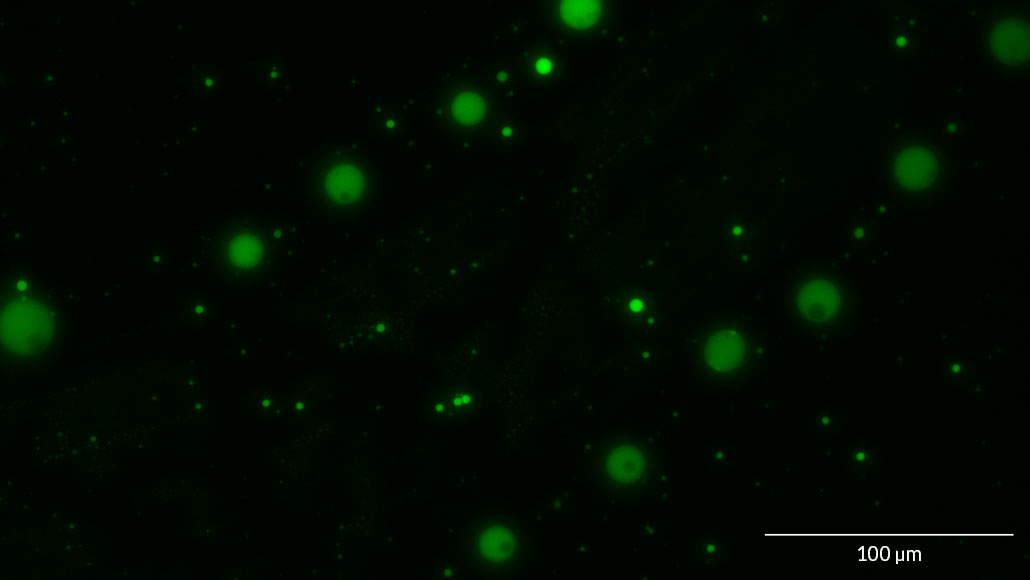A new study shows that a simple class of molecules called alpha hydroxy acids forms microdroplets when dried and rewetted, as could have taken place at the edges of water cources.
These cell-sized compartments can trap RNA, and can merge and break apart -- behavior that could have encouraged inanimate molecules in the primordial soup to give rise to life, researchers report July 22 in the Proceedings of the National Academy of Sciences.
A new study shows that a simple class of molecules called alpha hydroxy acids forms microdroplets when dried and rewetted, as could have taken place at the edges of water cources. These cell-sized compartments can trap RNA, and can merge and break apart -- behavior that could have encouraged inanimate molecules in the primordial soup to give rise to life, researchers report July 22 in the Proceedings of the National Academy of Sciences.A new study shows that a simple class of molecules called alpha hydroxy acids forms microdroplets when dried and rewetted, as could have taken place at the edges of water cources. These cell-sized compartments can trap RNA, and can merge and break apart -- behavior that could have encouraged inanimate molecules in the primordial soup to give rise to life, researchers report July 22 in the Proceedings of the National Academy of Sciences.A new study shows that a simple class of molecules called alpha hydroxy acids forms microdroplets when dried and rewetted, as could have taken place at the edges of water cources. These cell-sized compartments can trap RNA, and can merge and break apart -- behavior that could have encouraged inanimate molecules in the primordial soup to give rise to life, researchers report July 22 in the Proceedings of the National Academy of Sciences.
 |
| Tiny Bubbles |
A new study shows that a simple class of molecules called alpha hydroxy acids forms microdroplets when dried and rewetted, as could have taken place at the edges of water cources. These cell-sized compartments can trap RNA, and can merge and break apart -- behavior that could have encouraged inanimate molecules in the primordial soup to give rise to life, researchers report July 22 in the Proceedings of the National Academy of Sciences.
A new study shows that a simple class of molecules called alpha hydroxy acids forms microdroplets when dried and rewetted, as could have taken place at the edges of water cources. These cell-sized compartments can trap RNA, and can merge and break apart -- behavior that could have encouraged inanimate molecules in the primordial soup to give rise to life, researchers report July 22 in the Proceedings of the National Academy of Sciences.
A new study shows that a simple class of molecules called alpha hydroxy acids forms microdroplets when dried and rewetted, as could have taken place at the edges of water cources. These cell-sized compartments can trap RNA, and can merge and break apart -- behavior that could have encouraged inanimate molecules in the primordial soup to give rise to life, researchers report July 22 in the Proceedings of the National Academy of Sciences.



3 Comments
Experiment is running....
ReplyDeleteYeah right
DeleteAnother experiment is running....😂😛😅
ReplyDelete